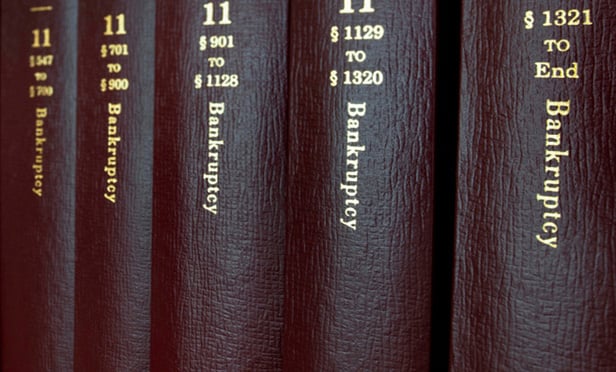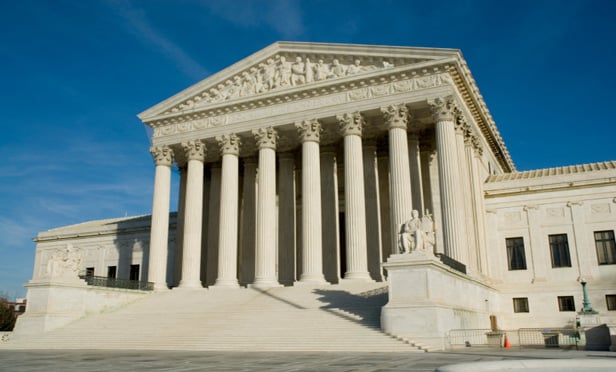Features

Secured Creditors Beware of Your Descriptions, Nomenclature and Terminations
Secured creditors can learn a great deal from a few recent bankruptcy cases involving the Uniform Commercial Code that remind us that the “devil is in the details.” These cases show that it is unrealistic to expect forgiveness by a court after a misstep involving Article 9 of the UCC.
Features

Strawberry Fields For Sale
On Oct. 3, 2018, the Chapter 11 Liquidating Plan of Eclipse Berry Farms, LLC was confirmed, concluding a two-year journey from one of the largest strawberry growers in the country to the cessation of operations and eventual liquidation.
Features

Debtor v. UST: The Battleground Over Retention of a Chief Restructuring Officer
The battle over retaining a chief restructuring officer, which the United States Trustee has traditionally not objected to, is heating up.
Features

Second Circuit Rejects Use of Involuntary Bankruptcy Petition As Collection Tool
A bankruptcy court properly dismissed a creditor's involuntary bankruptcy petition “for cause” when it “would serve none of the Bankruptcy Code's goals or purposes … and [when] the sole [petitioning] creditor is not substantially prejudiced by remedies available under state law,” held the U.S. Court of Appeals for the Second Circuit in </i>In re Murray.</i>
Features

Which Financial Representations Will Justify a Discharge Objection after Lamar, Archer?
The Supreme Court's decision in <i>Lamar, Archer & Cofrin, LLP v. Appling</i> has significantly constricted the range and nature of statements that will support a successful objection by a creditor to the discharge of a debt that was obtained by the statements in question. This constriction could have a very real impact on how entities that loan money or provide services on credit review and collect information regarding a borrower's creditworthiness.
Features

Defusing the UST Tax Bomb
<b><i>How Lenders and Debtors can Minimize UST Fees and Maximize Creditor Recoveries</b></i><p>As predicted in the first part of this article (May, 2018), the new United States Trustee (UST) fee has had a disproportionate effect on middle-market, high-velocity cash flow companies. The best solution is for Congress to revisit the fee structure and refine it to reflect the realities of particular cases and the actual burden on the UST.
Features

Eleventh Circuit Strengthens Creditor's Defense to Preference Claim
A defendant creditor in a preference suit may offset 1) the amount of later “new value” it sold to the Chapter 11 debtor against 2) the debtor's earlier preferential payment to the creditor, the U.S. Court of Appeals for the Eleventh Circuit recently held.
Features

The Bankruptcy Code's Inherent Limitations for Struggling Golf Courses
<b><i>Part Two of a Two-Part Article</b></i><p>The ability of a debtor to reject a restrictive covenant under Section 365 or to sell free and clear of a covenant under Section 363(f) is limited and the obstacles are difficult to surmount. A possible solution, however, may surface if a debtor can demonstrate a change of circumstances under state law.
Features

Third Circuit Affirms Reversal of $275M Break-Up Fee in Del. Bankruptcy Case
The U.S. Court of Appeals for the Third Circuit on Sept. 13 upheld a Delaware Bankruptcy Court's decision to block a Florida-based energy company from collecting a $275 million merger termination fee against the bankruptcy estates of Energy Future Holdings Corp. and a subsidiary.
Features

Acquisition of Claims for Plan Control
The United States Court of Appeals for the Ninth Circuit recently provided additional guidance to creditors seeking to block confirmation of a plan by…
Need Help?
- Prefer an IP authenticated environment? Request a transition or call 800-756-8993.
- Need other assistance? email Customer Service or call 1-877-256-2472.
MOST POPULAR STORIES
- The Article 8 Opt InThe Article 8 opt-in election adds an additional layer of complexity to the already labyrinthine rules governing perfection of security interests under the UCC. A lender that is unaware of the nuances created by the opt in (may find its security interest vulnerable to being primed by another party that has taken steps to perfect in a superior manner under the circumstances.Read More ›
- Strategy vs. Tactics: Two Sides of a Difficult CoinWith each successive large-scale cyber attack, it is slowly becoming clear that ransomware attacks are targeting the critical infrastructure of the most powerful country on the planet. Understanding the strategy, and tactics of our opponents, as well as the strategy and the tactics we implement as a response are vital to victory.Read More ›
- Clause & EffectNet-Profit Rights/Movies Based on TV Shows<br>Insurance/Contract-Breach Exclusion<br>Insurance/Copyright-Infringement CoverageRead More ›
- Rights and Obligations In Patent LicensesThe owner of a commercially successful patent may have competing desires. On one hand, the patent owner wants to protect the patent and secure its maximum benefit; on the other hand, the patent owner wants to avoid enforcement litigation with competitors because it is expensive and puts the patent at risk.Read More ›
- Foreseeability as a Bar to Proof of Patent InfringementThe doctrine of equivalents is a rule of equity adopted more than 150 years ago by the U.S. Supreme Court. Prosecution history estoppel is a rule of equity that controls access to the doctrine. In May 2002, the Court was called upon to revisit the doctrine and the estoppel rule in <i>Festo Corp. v. Shoketsu Kinzoku Kogyo Kabushiki Co. Ltd.</i> Ultimately the Court reaffirmed the doctrine and expanded the estoppel rule, but not without inciting heated debate over the Court's rationale — especially since it included a new and controversial foreseeability test in its analysis for estoppel.Read More ›
